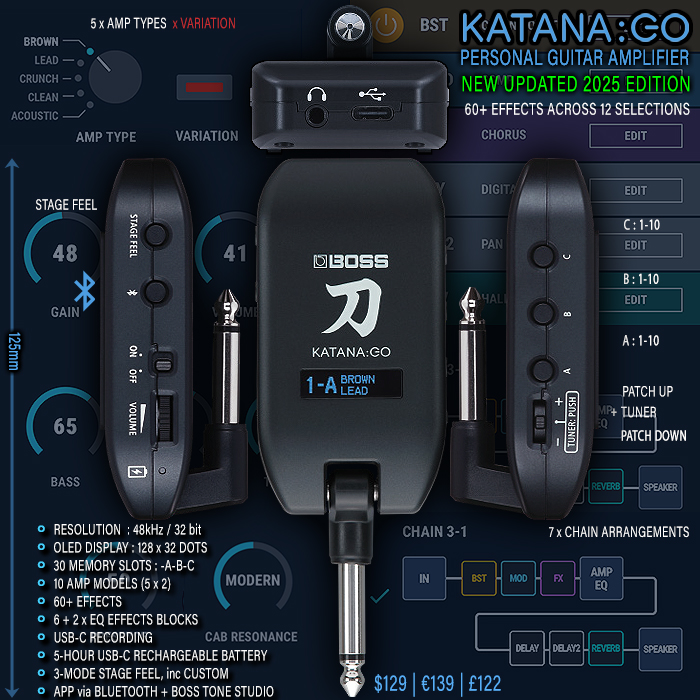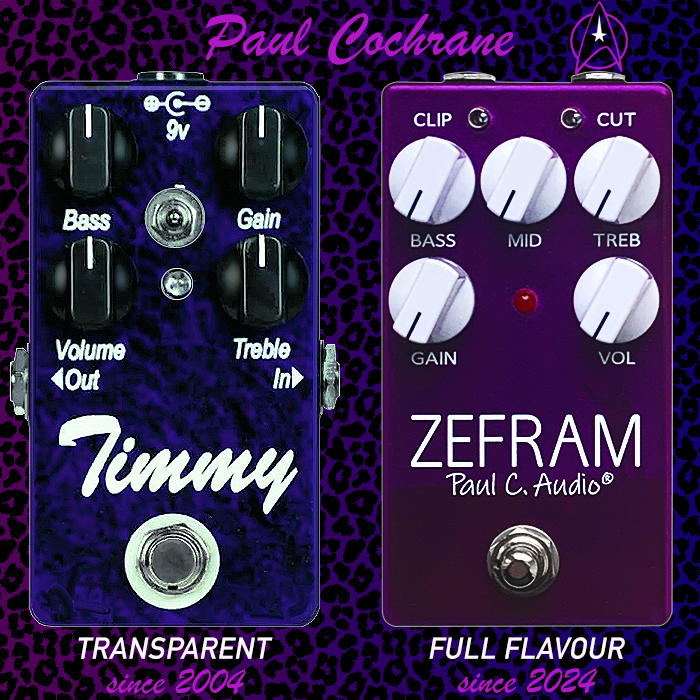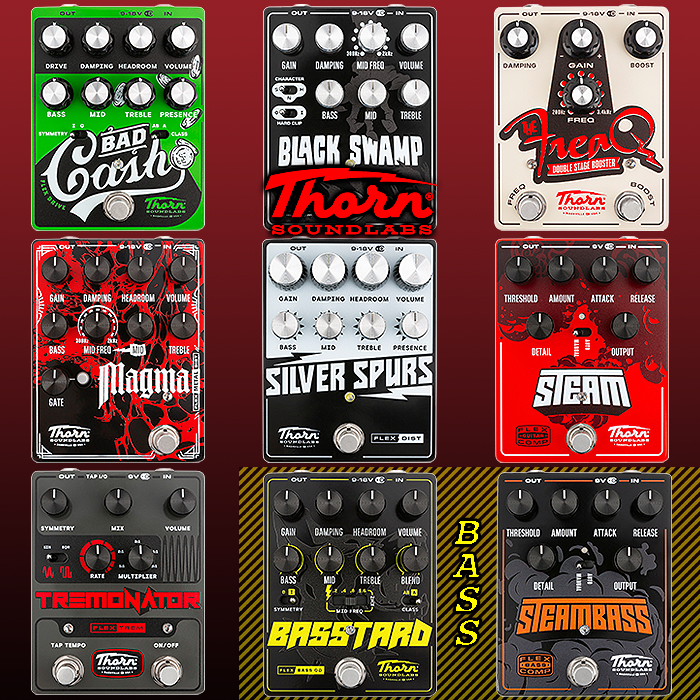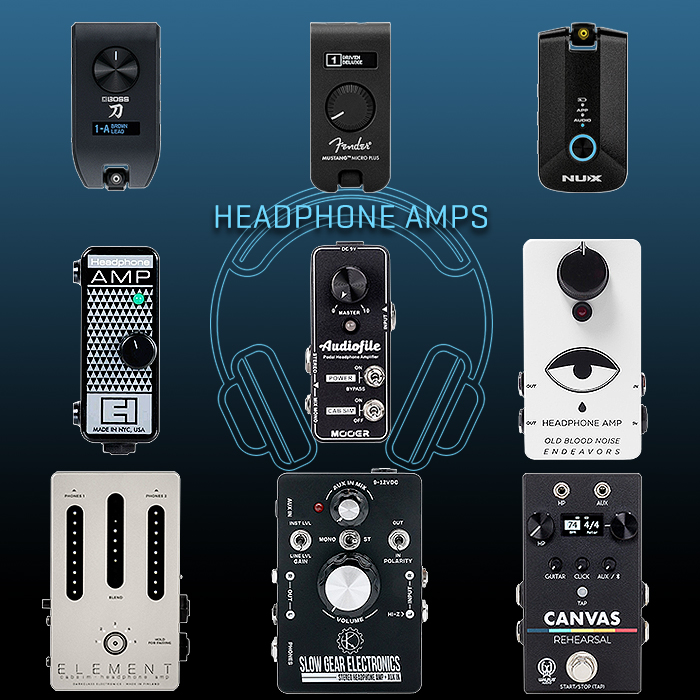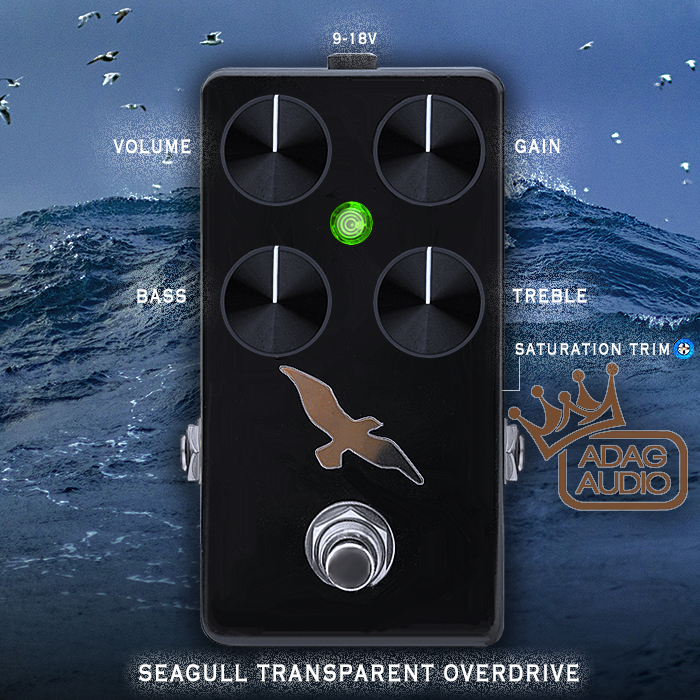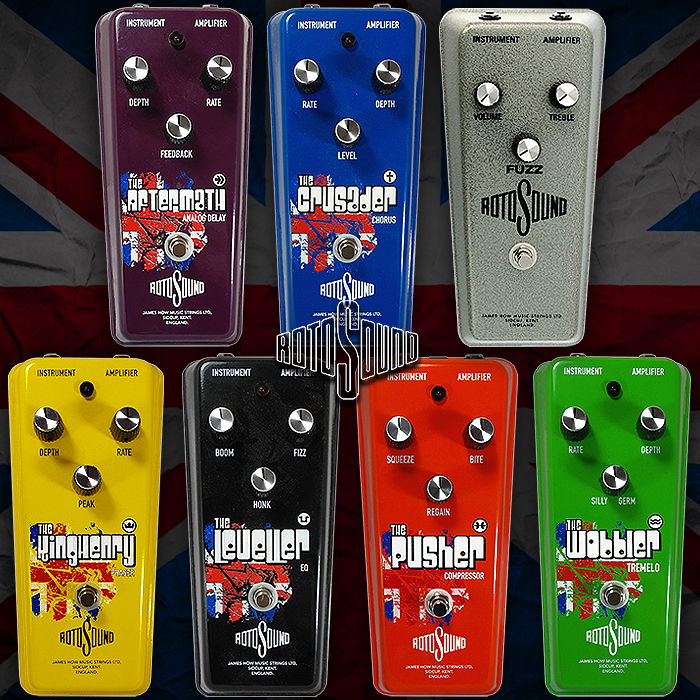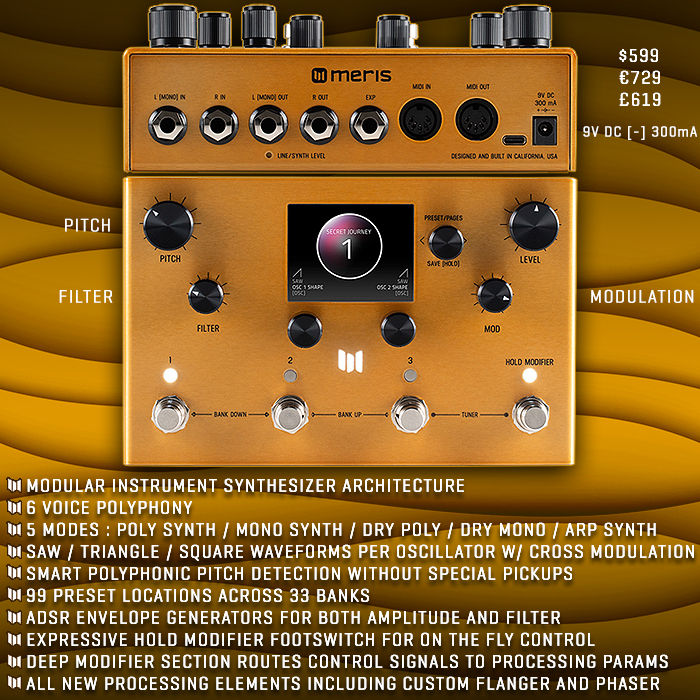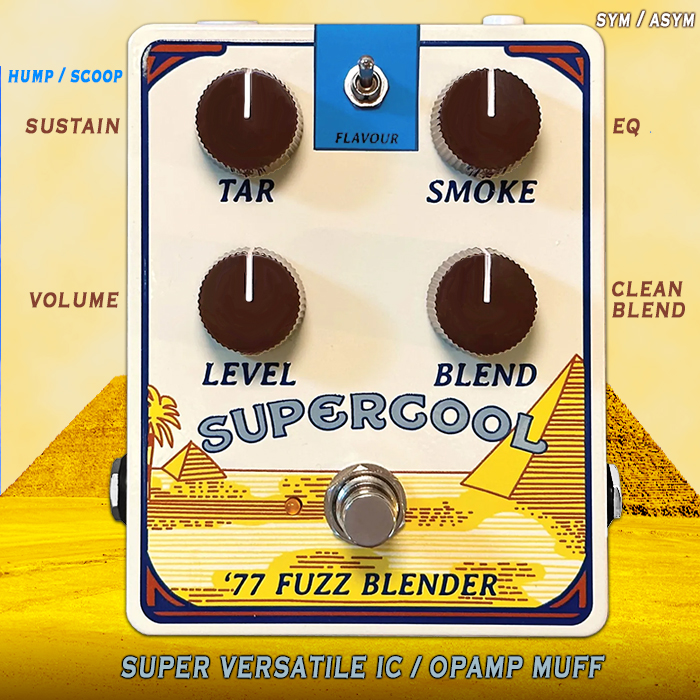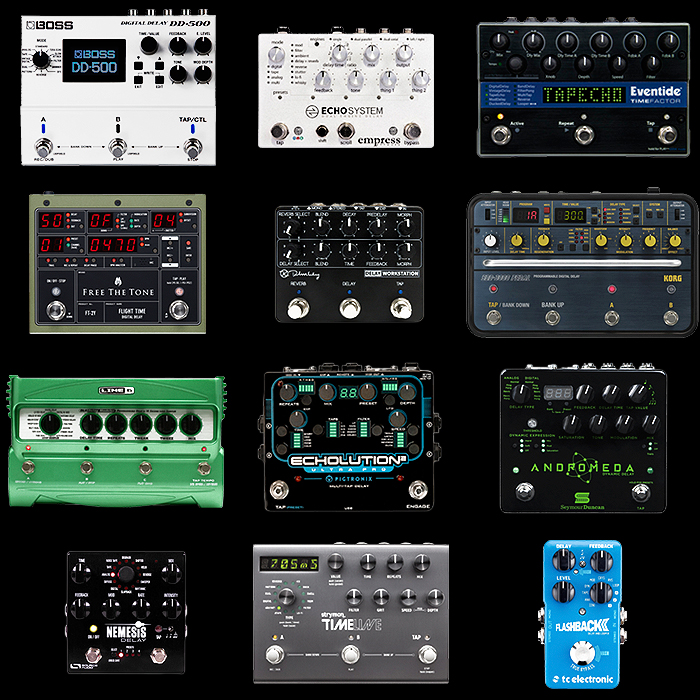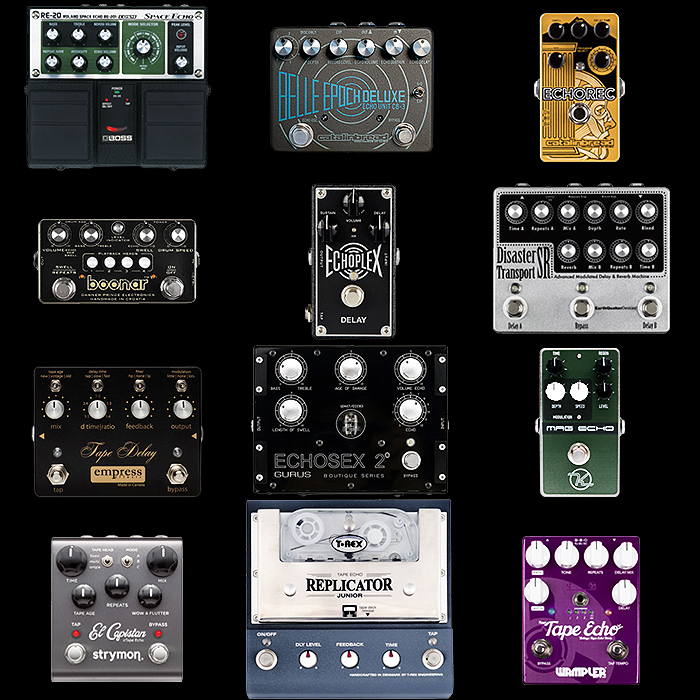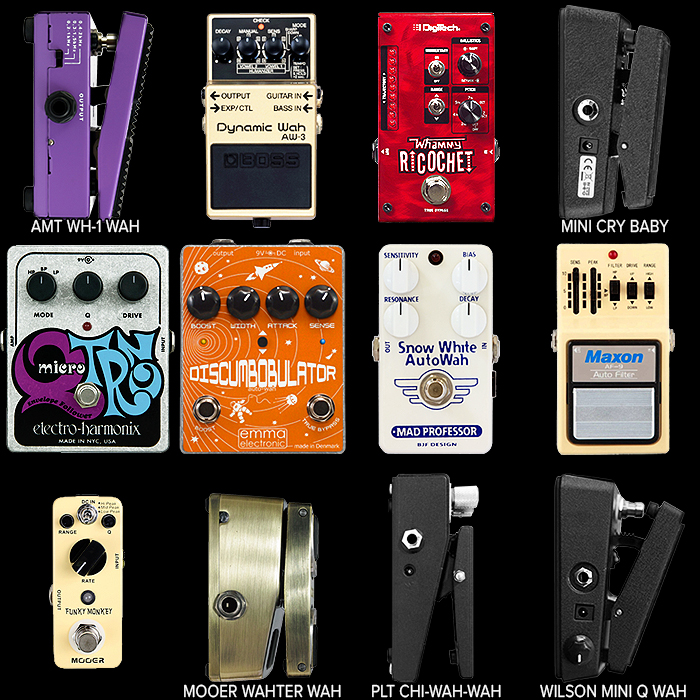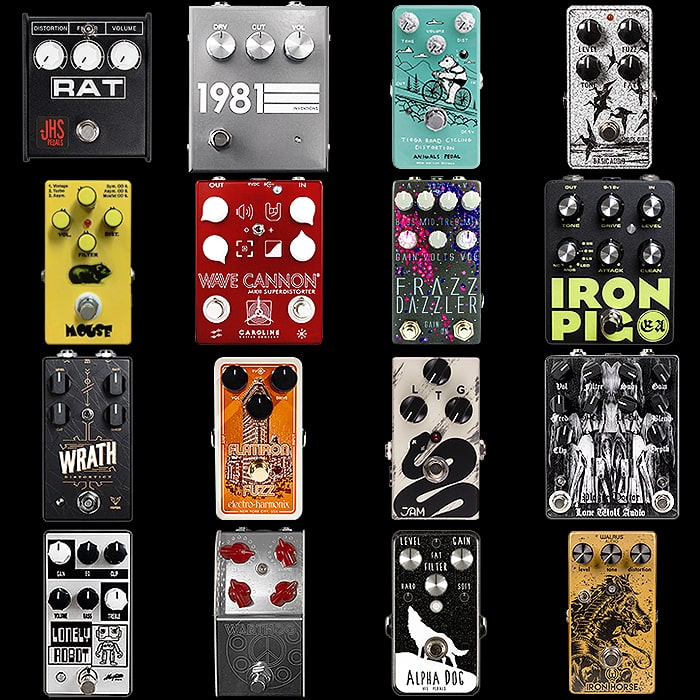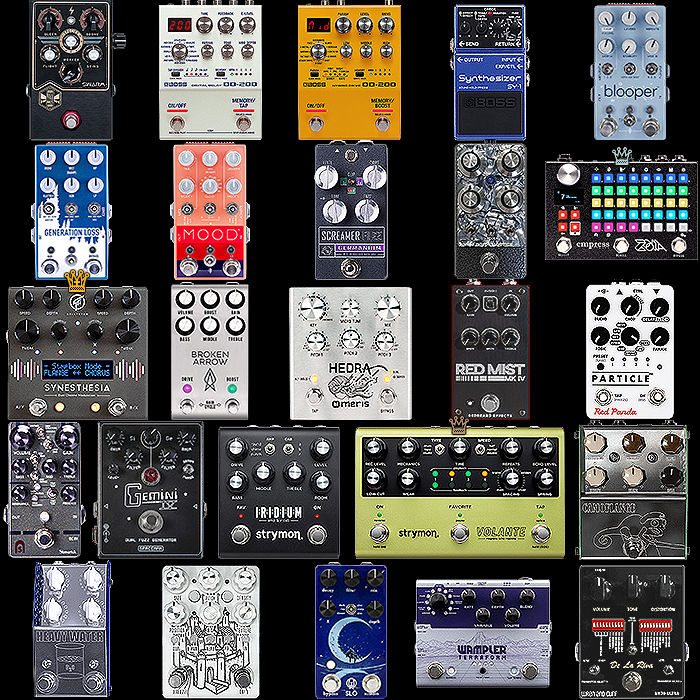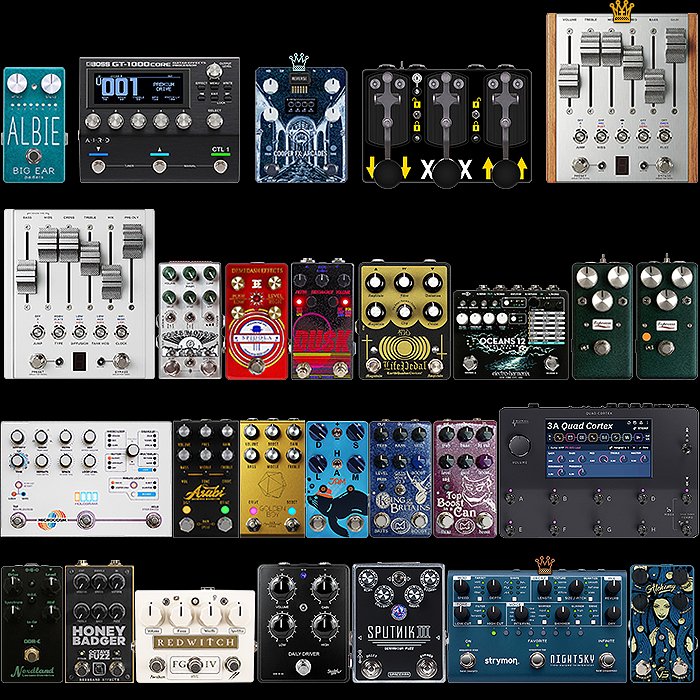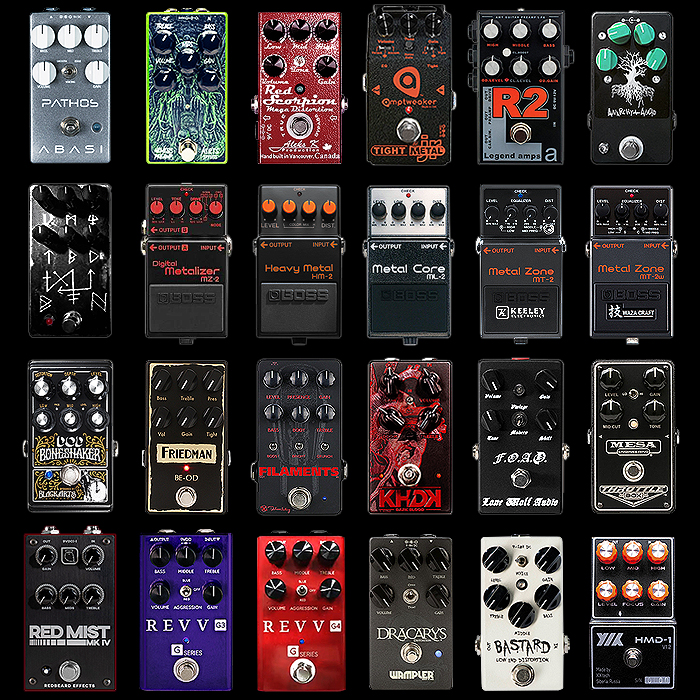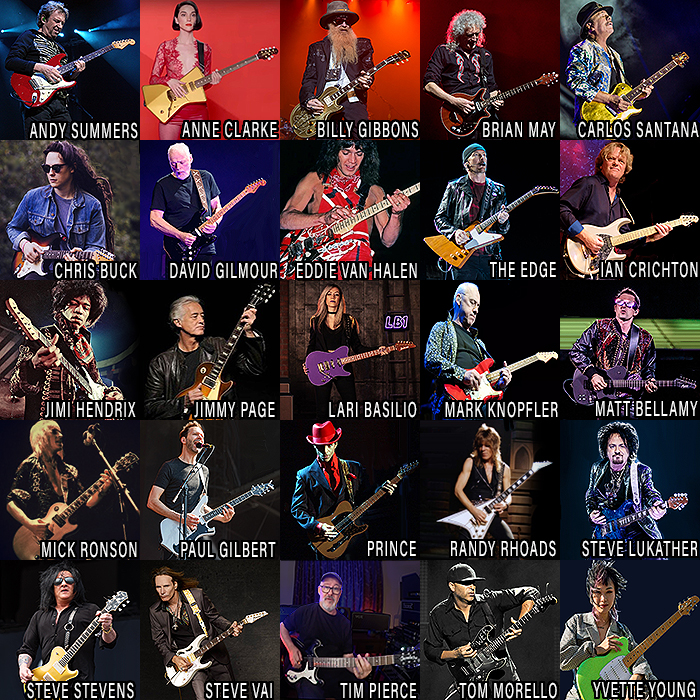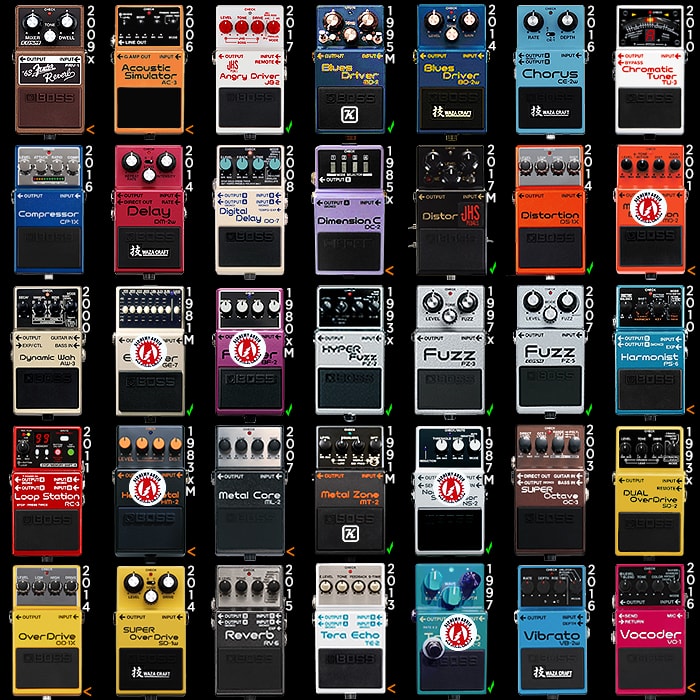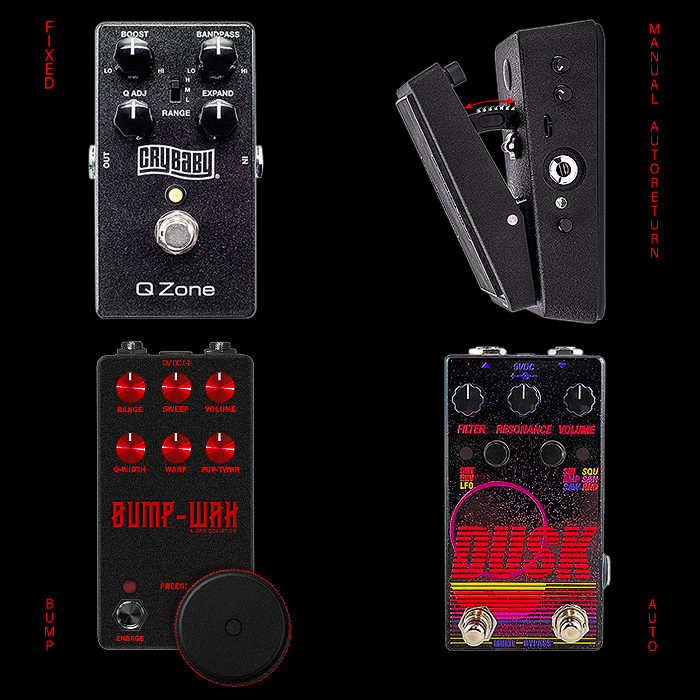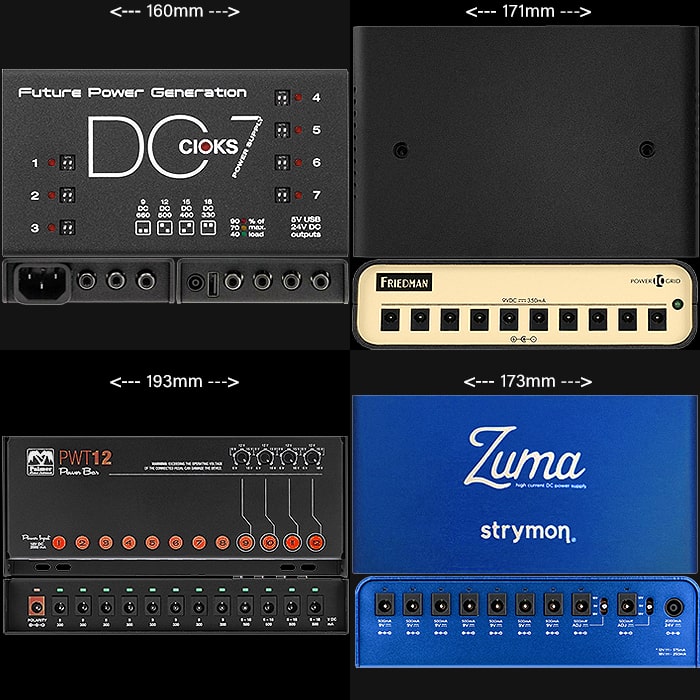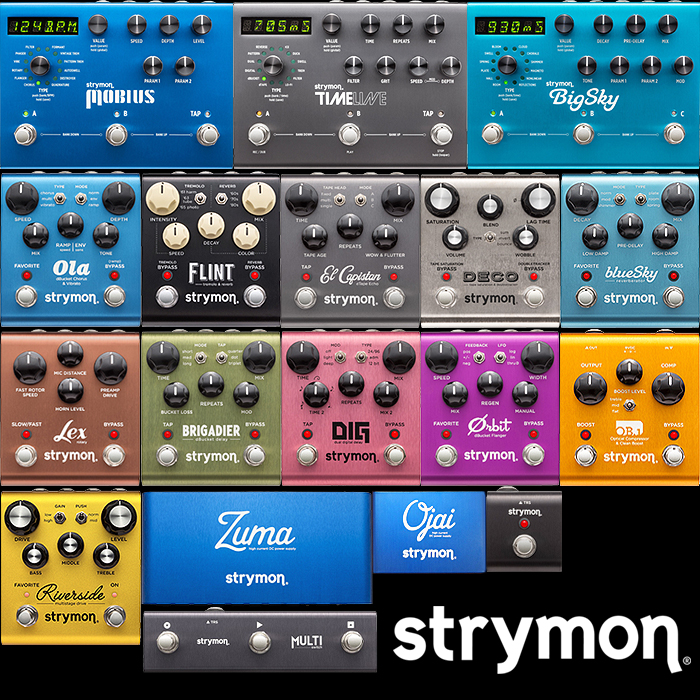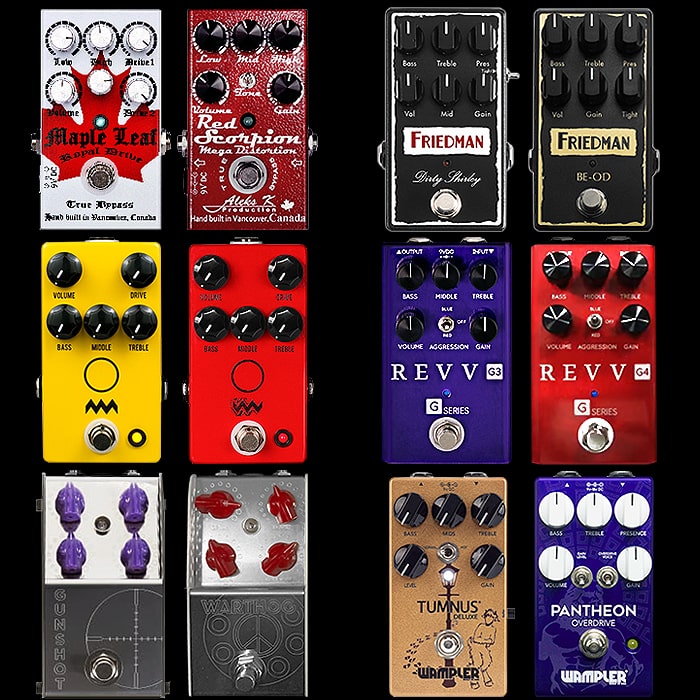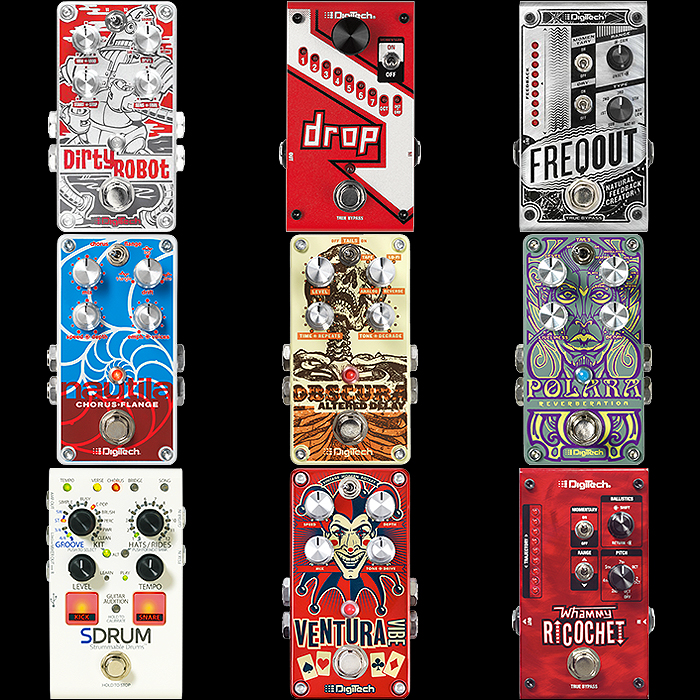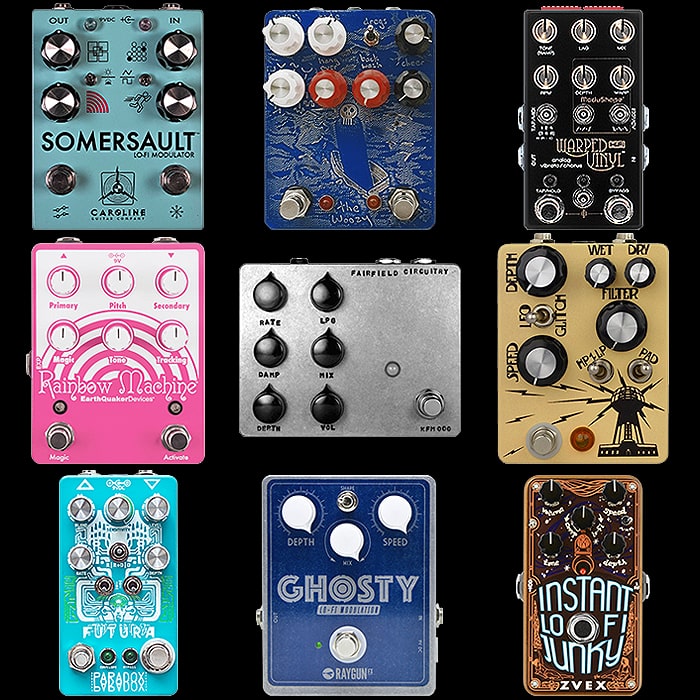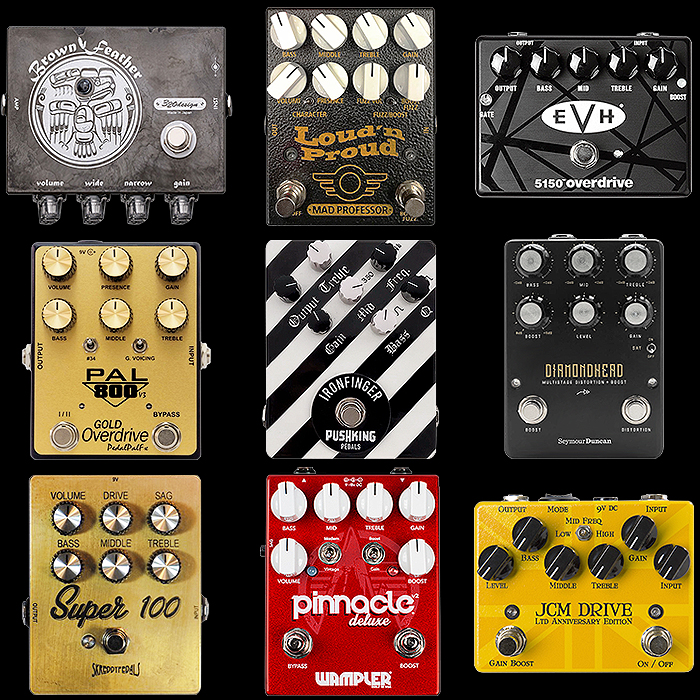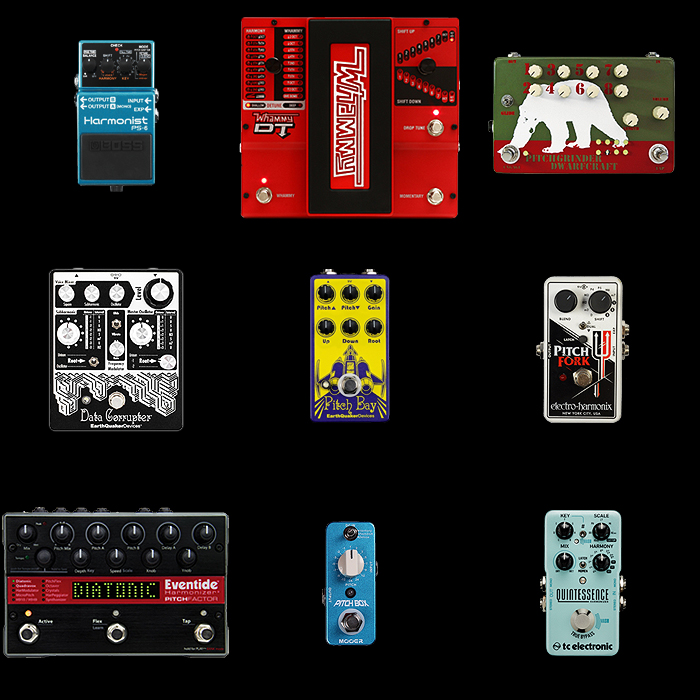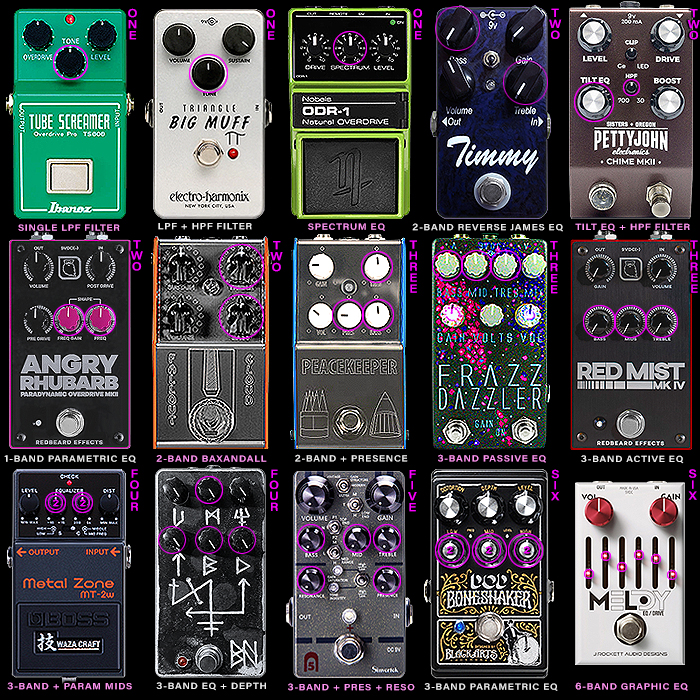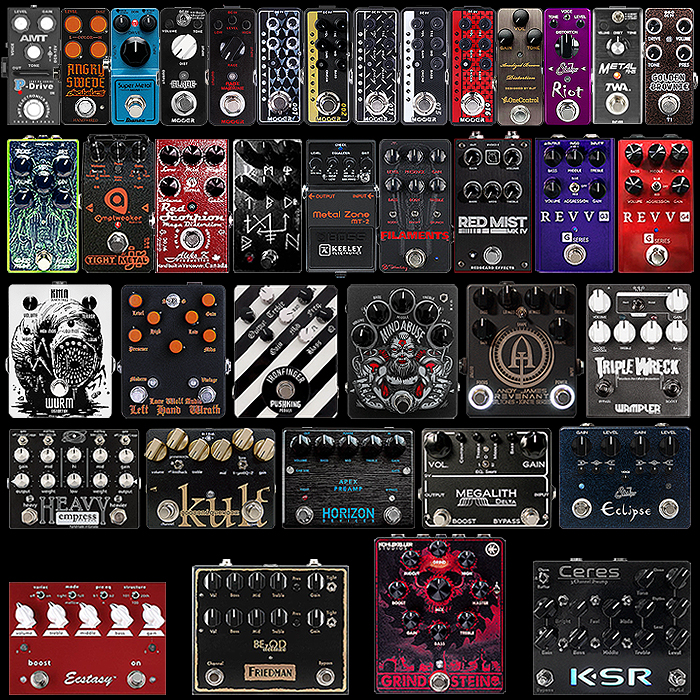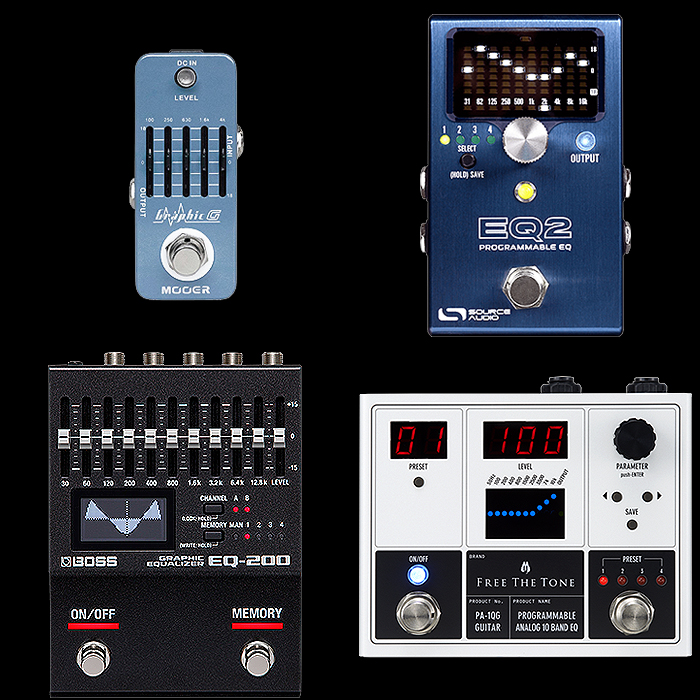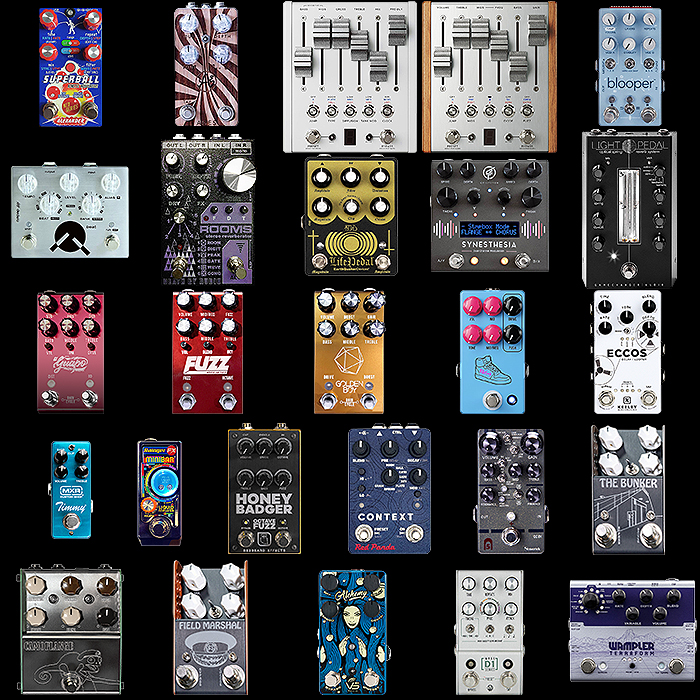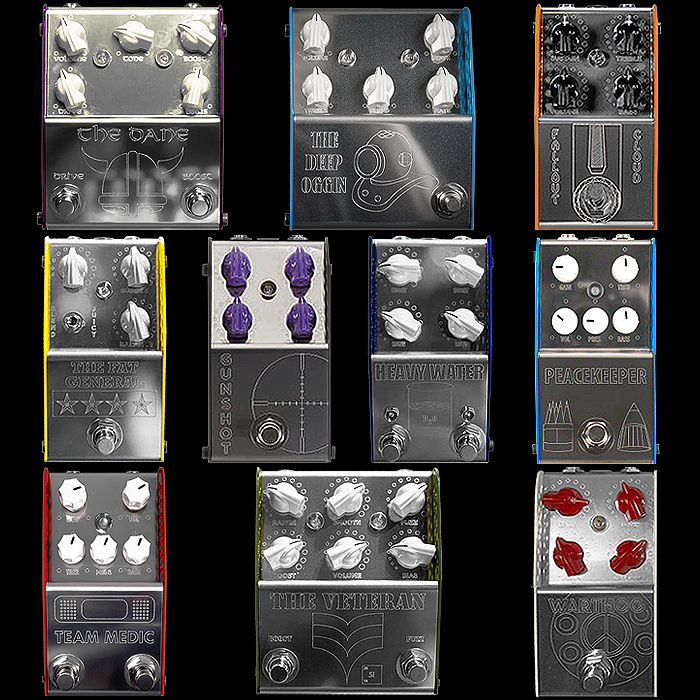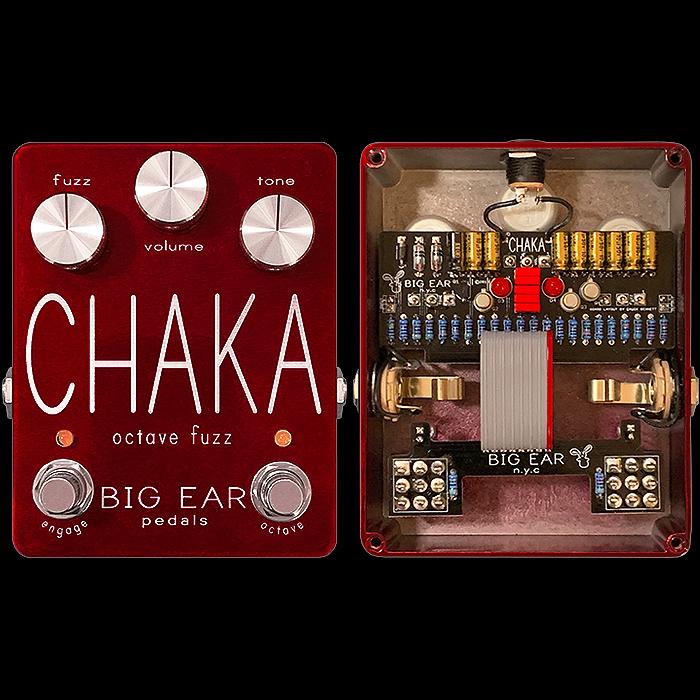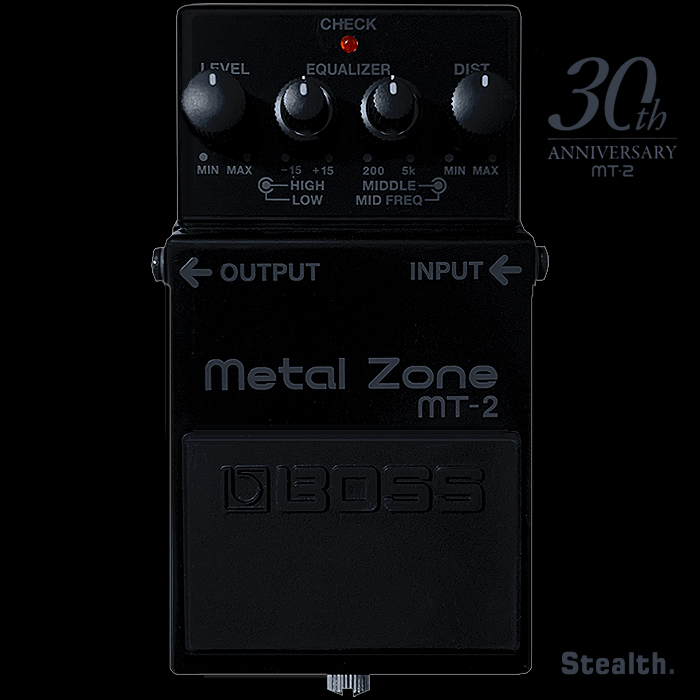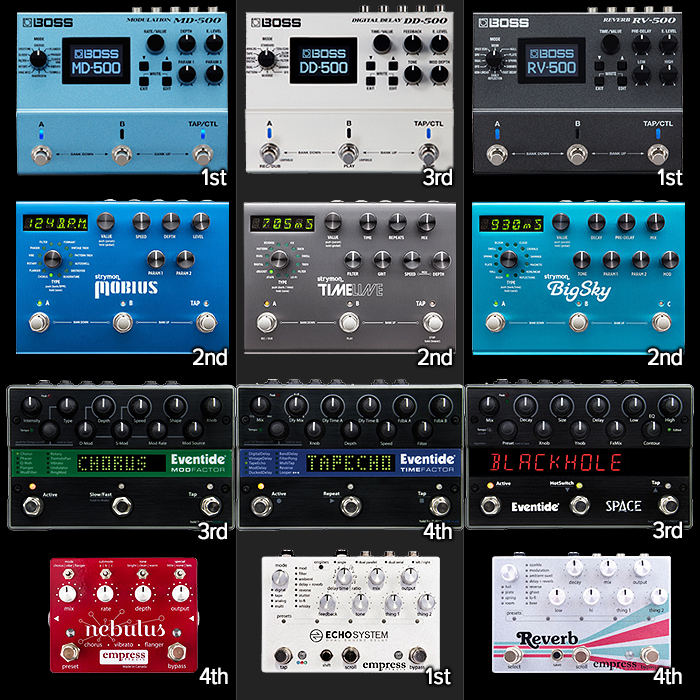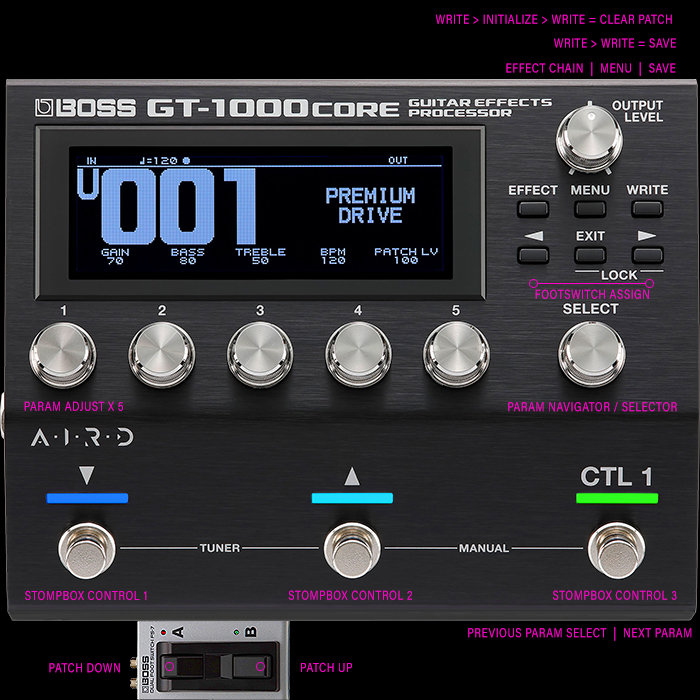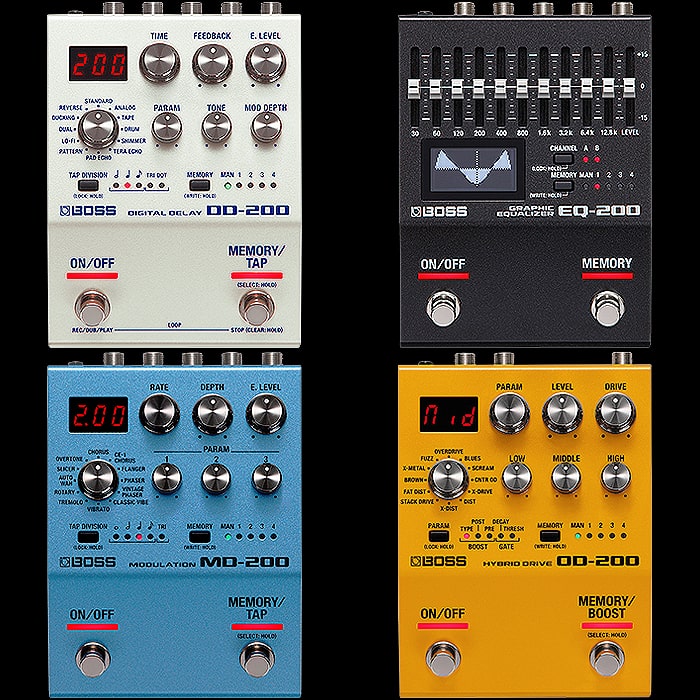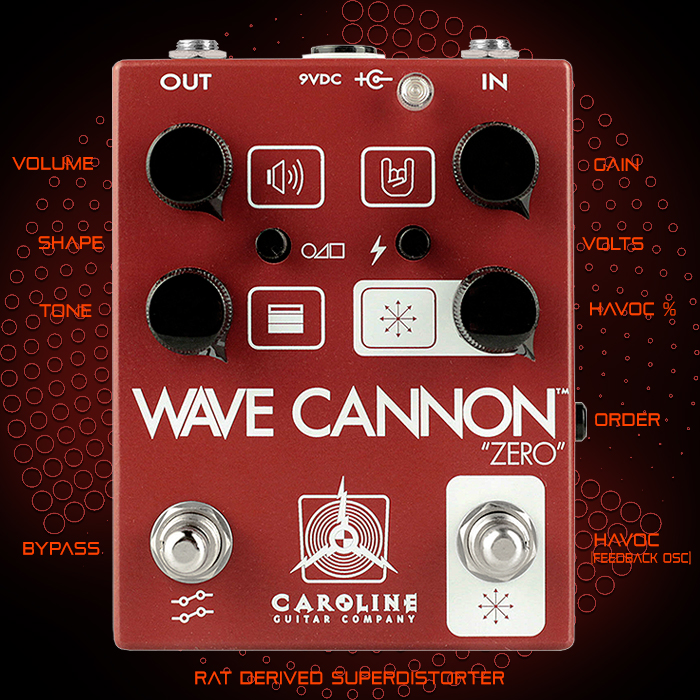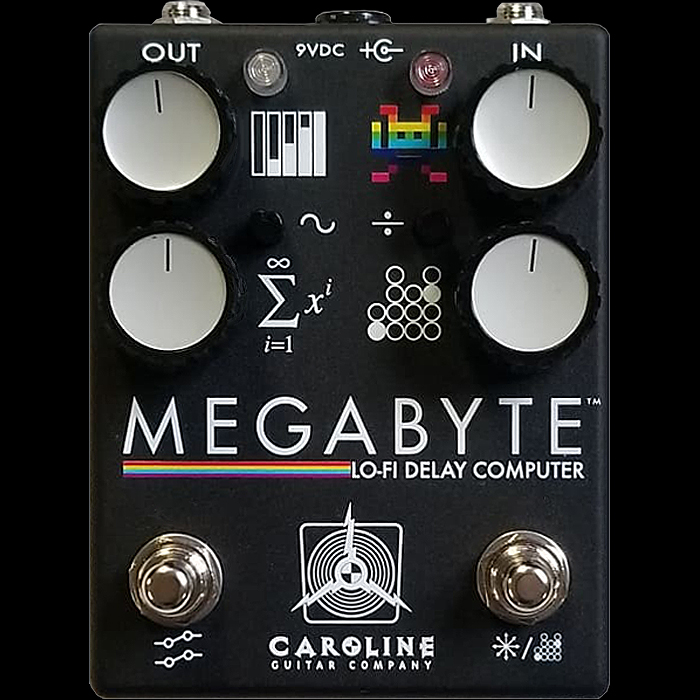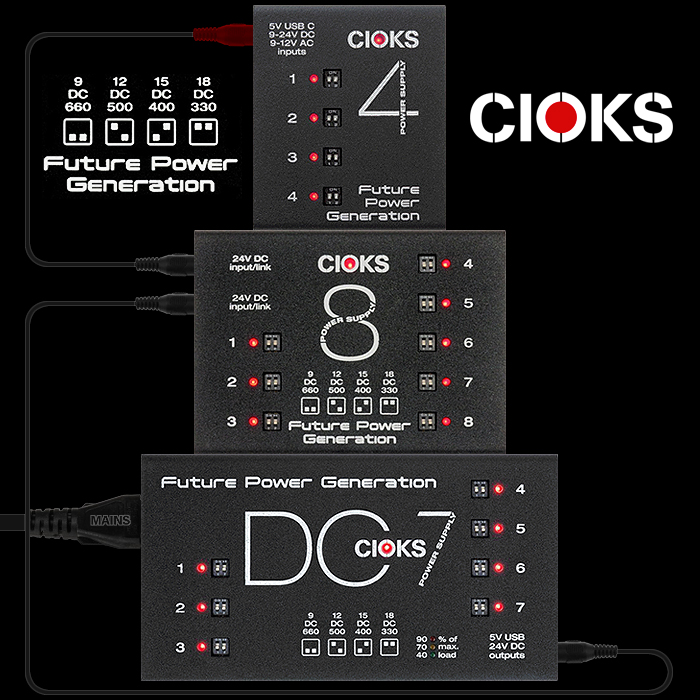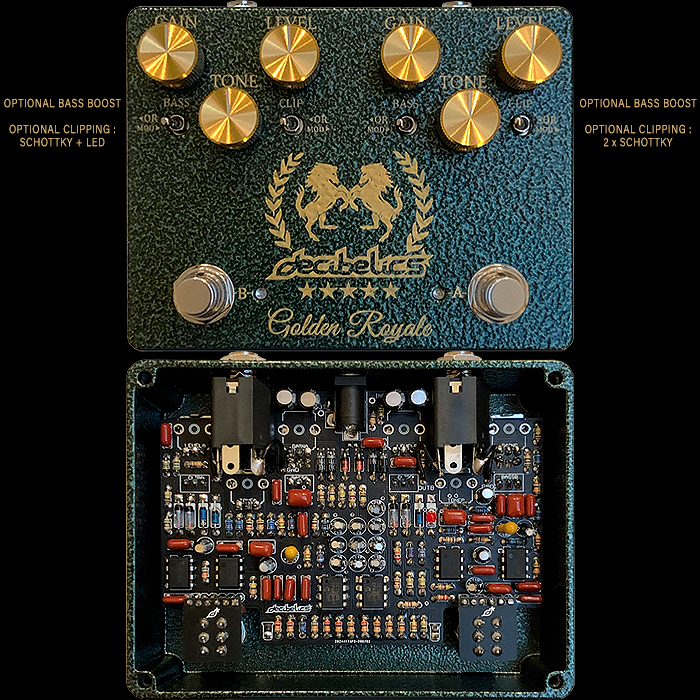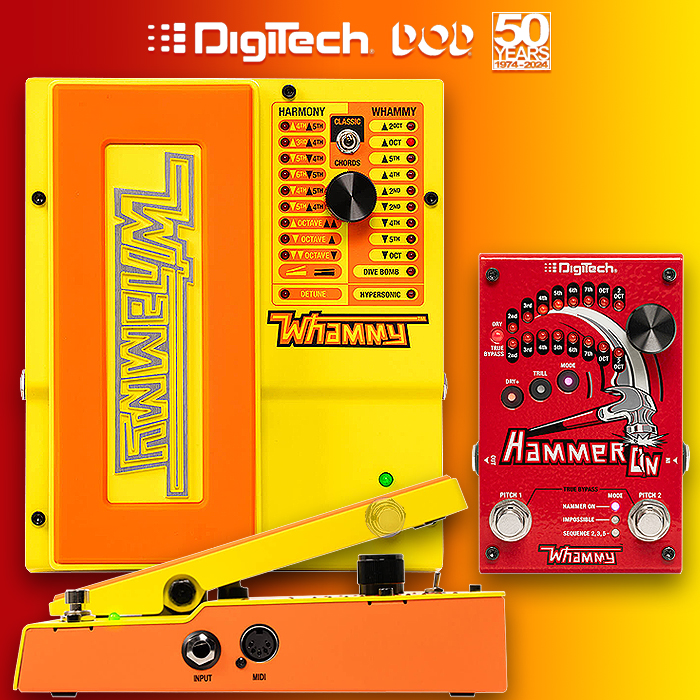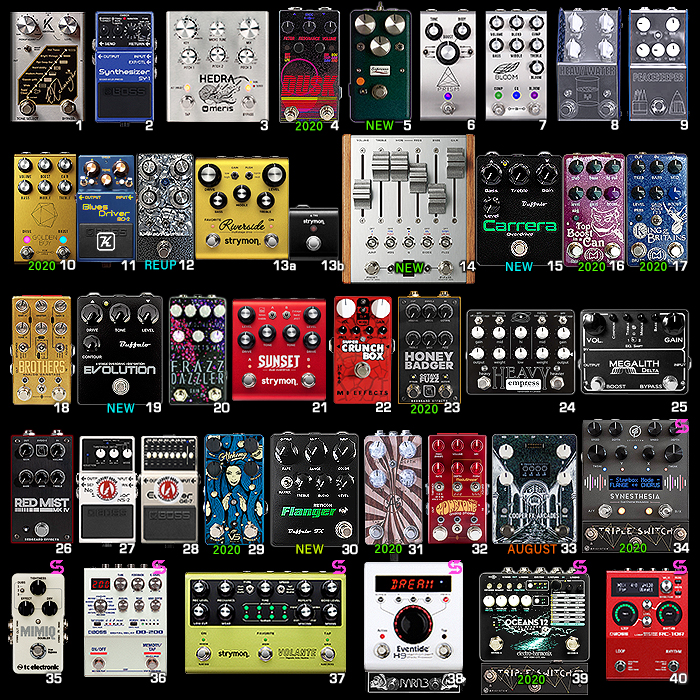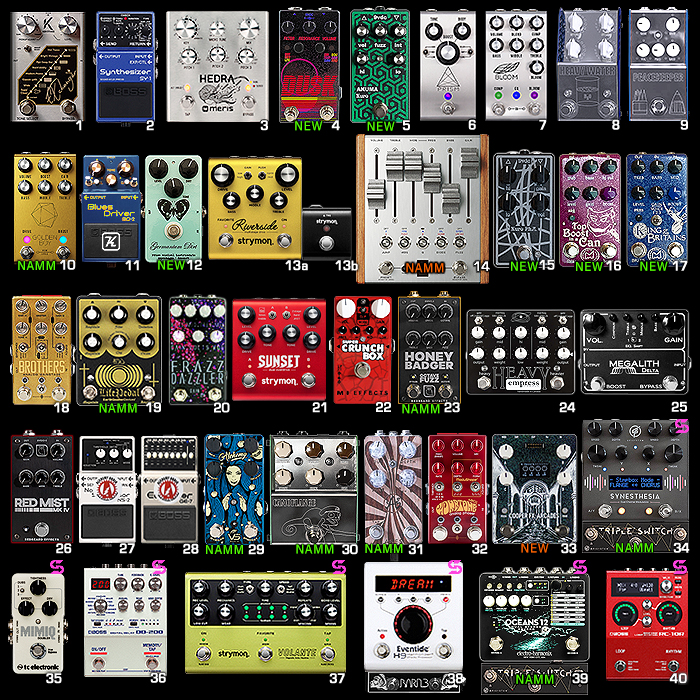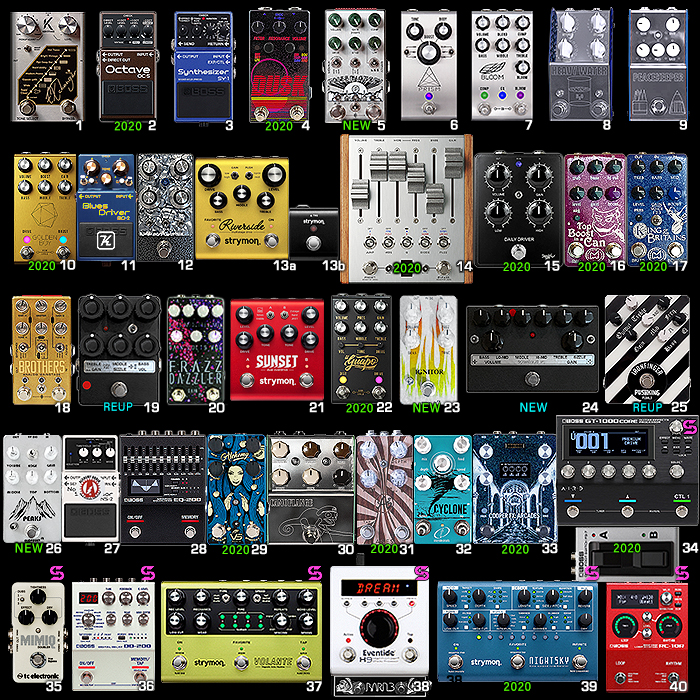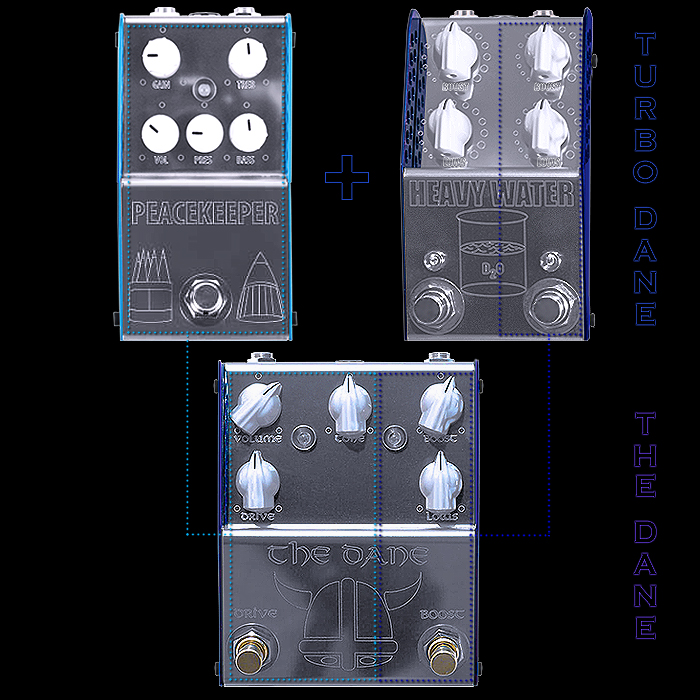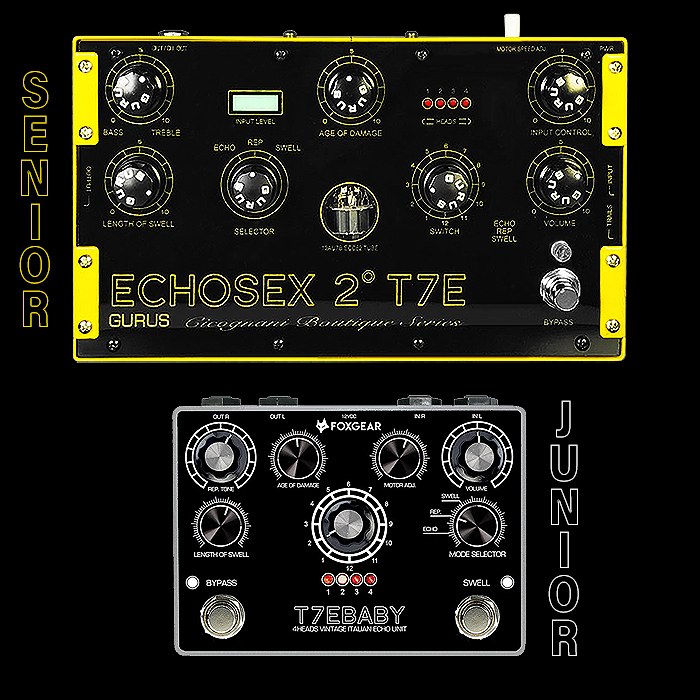Mikey Demus's Pedalboard Dynamics and Essential Tone Components
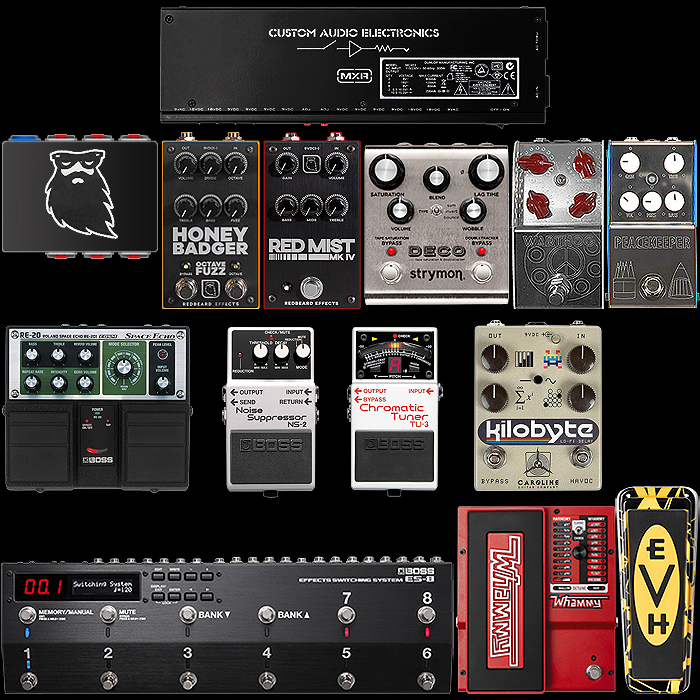
Readers of this blog should be well aware by now of Skindred’s Lead Guitarist and Redbeard Effects Head Honcho Mikey Demus. And while I had been very familiar with his band Skindred for a number of years - my focus didn’t shift fully to Mikey himself until he got into partnership with Adrian Thorpe and started producing his own range of signature pedals.
The first release was an exceptional take on Mikey’s core signature Orange Rockerverb 100 Amp sound - the Red Mist MKIV Distortion. Mikey seems to be a man after my own heart in pursuing that Crisp, Crunchy and Punchy tonality. It’s quite evident that he’s a total riff monster in how he plays - which funnily enough coincides with how I like to jam! From my earliest DJ’ing days in the late 80’s I’ve always sought out that particular crisp / attacking / snappy tonality. I’ve also always selected my hi-fi components for their ability to deliver that tight and percussive bass and crisp mids and upper frequencies. So a large part of my own ToneQuest seems to have been in an area where Mikey mostly operates himself.
The same is pretty much true of Redbeard pedal #2 - the Honey Badger Sub-Octave Fuzz - that also has that grinding crunchy signature sound - which is the opposite of the slightly more saggy saturated distortion you often get at similar levels of gain. Both the Redbeard pedals are firm favourites of mine since launch - in fact currently permanent fixtures in my higher gain selection - and settled on slots #23 and #26 of my pedal-chain.
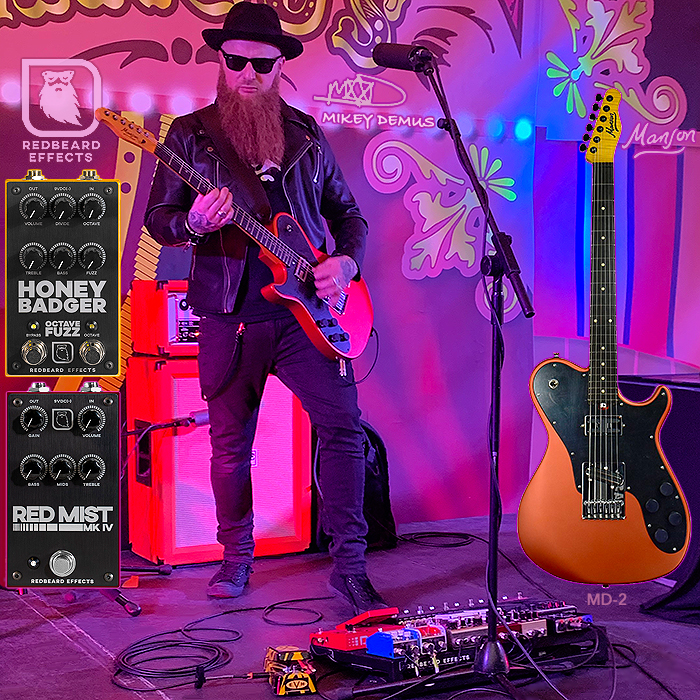
This particular article actually comes out of and is a follow-up to the piece I did on this year's Birmingham Guitar Show. I had never heard Skindred play live - and to hear Mikey's live performance was a real eye-opener for me into that fantastic world - Thorpy cites Skindred as one his consistently favourite live experiences. Mikey was playing through his Rockerverb 100 amp and a matching Orange PPC212V Cab and it sounded majestic - really loud for sure - but incredibly crisp and tight and well-balanced at the same time.
I determined that I would do a feature on Mikey's pedalboard employed there - for which the Red Mist and Honey Badger were of course the star performers. In fact as I recall - Mikey played through the first three tracks off Skindred's 2018 Big Tings album - where title track Big Tings in fact uses the Honey Badger to particularly great effect.
I was unable to find footage from the Birmingham show for that first track - so the Norwich UAE version is a suitable substitute for sound-reference purposes. In fact I spent a lot of time trying to find live footage of the Birmingham event in general, and the only thing I managed to unearth to-date is the below full segment of track #3 'Machines' - which is more core Rockerverb / Red Mist MKIV territory - with some cool Wah / Whammy flourishes.
I had a slight conundrum as to what order I should visualise the pedals - and decided to go with the actual pedalboard layout in the end as it was pictured - much like I did with Josh Smith. I liaised with Mikey on the actual signal-chain order which flows as follows :
Manson Mikey Signature MD-2 Guitar > CryBaby EVH Wah > Boss ES-8 Switcher > Boss TU-3 Tuner (Tuner Out) > DigiTech Whammy 5 > ThorpyFX Peacekeeper Overdrive > ThorpyFX Warthog Distortion > RedBeard Red Mist MKIV Distortion > Redbeard Honey Badger Sub-Octave Fuzz > Strymon Deco Tape Effects Simulator > Boss NS-2 Noise Suppressor > Caroline Kilbobyte Lo-Fi Delay > Boss RE-20 Space Echo - Tape EchoVerb > Custom Junction Box > MXR CAE MC403 Pedal Power > Orange Rockerverb 100 MKIII / PPC212V
I'm very familiar with all these featured pedals actually and my own collection and pedal-chain overlaps very significantly in effects coverage. For me the stars of the show here are the two Redbeard Effects pedals - and the Wah and Whammy - which Mikey uses to such singularly great effect on most of his tracks.
Here follow a few more details on each :
Dunlop CryBaby EVH95 Wah - £186
This Eddie Van Halen Signature CryBaby Wah is a great match for Mikey's soundstage - and the specific frequency sweep really suits his core tones. This is one of those original large format Wah pedals I'm not that keen on myself - preferring something a little more pedal-board friendly - in fact most recently I've made do with more dynamic filters and auto-wahs - like the Dr Scientist Dusk. I do appreciate a good Wah though - more in the compact territory likely though - while Rob Chapman recently seemed to prove that the larger ones sounded better! I already have the CryBaby CBM95 and 535Q Mini Wahs. And always intended to get the JHS modded Mini Super Wah and Wilson Mini Q Wah before I headed off into Filter and Auto-Was territory. Based on this recent inspiration I may well look to bringing an actual manual Wah back into the chain - we'll see. Besides having the just-right frequency range and two blue on-indicator LEDs - there really isn't anything other significant to the EVH Wah - there are no additional knobs or switches for optional settings for instance.
DigiTech Whammy 5 - £135
Lots of players have used this pedal to great effect over the years, while I will always associate it as the 'Tom Morello' effect - popularised via the solo section of 'Killing in the Name Of'. Mikey does some fantastic flourishes with this pedal - utilising it both superbly within rhythm work as well as solo accentuation. For my taste the pedal has always been a touch large and impractical for my exact needs - so my preferred take on this is the significantly more diminutive DigiTech Whammy Ricochet which allows you to do much the same (but not exactly) by utilising its footswitch in momentary fashion. The Ricochet contains both Classic Whammy and Chords Modes and most of what you get on the bigger Whammy 5 - but you don't get quite the same degree of fine control or nuance. Possibly DigiTech will see there way to doing a slightly more compact version of the treadle / rocker variety!
Boss ES-8 Effects Switching System - £579
Industry standard switching solution for gigging musicians. I've not really done a whole load of due diligence on these types of pedals - but know I would be generally looking at Boss, Morningstar, OneControl and TheGigRig if I wanted to go down this direction. For the 8-Loops category - it's probably a toss-up between the Boss ES8 and the Morningstar MC8 - each has its own benefits.
Caroline Guitar Company Kilobyte Lo-Fi Delay - £199
I really should have said it in the intro - but nearly everything in Mikey's rig is textural - besides the Space Echo - which is more expansive / ambient. That's why he make use of the Kilobyte Lo-Fi delay - which adds a little bit of grain to the feedback trails. Currently I don't have any dedicated direct alternative for this in my rig. I have the Lo-FI mode on the Boss DD-200, but will certainly have more options when my Cooper FX Arcades arrives. I also have the Echo with Lo-Fi mode on my EHX Oceans 12 - so already have some degree of coverage for the Kilobyte - for sure a really cool textural delay, but not one I would considering adding as just that one singular flavour - and thereby replacing one of my more versatile pedals. I feel that my Eventide H9 Max should have something to offer in this area - but I don't think Eventide are fully up to speed with the more lo-fi side of things yet.
Boss TU-3 - £60
Another industry standard tuner with high accuracy and high visibility - I personally probably prefer the mini tuners - either one of the black TCE PolyTune Minis or the Sonic Research ST-300 Mini Turbo Tuner. For the larger compact format the Boss would definitely be in the frame too, alongside the standard Sonic Research ST-300, TC Electronic - and probably my current favourite in that form factor - the Peterson StroboStomp HD.
Boss NS-2 Noise Suppressor - £73
If you're packing a lot of heat on your board - you really need a decent noise-gate and I side with Mikey on the NS-2 being one of the all-time best candidates for that role. My version is the Alchemy Audio modded one with superior components for better signal-to-noise ratio - it makes a significant difference to the dynamics of my rig - but if the standard default one works fine for Mikey then that's all good too. For my own setup all my noisier gain pedals go through the loop on the pedal, while the lower gain pedals are on pass-through. I've tried a number of alternatives in this area, but for some reason my Alchemy Boss NS-2 version seems to work the best still.
Boss RE-20 Space Echo Tape-Style EchoVerb - £199
The Roland RE-201 Space Echo is one of the 3 legendary Tape Style / Magnetic Delay effects units alongside the Binson Echorec 2 and Maestro Echoplex EP-3. When I had the Boss RV-500 unit in my rig, the Space Echo algortihm was by far and away my favourite mode, also one of my favourite modes on the Empress EchoSystem Delay Workstation. In fact currently I have versions of it on 4 of my pedal-chain pedals - the Boss DD-200, Strymon Volante, Eventide H9 Max and EHX Oceans 12. Of the current stand-alone solid-state units the RE-20 is still the most feature-complete in most ways - while I would really like to see a Boss 200 series adaptation of this effect - as I find Boss's old dual-pedal form-factor a touch clunky. A Boss RE-200 would just be superb and I'm sure they would sell quite a number of those too!
ThorpyFX Peacekeeper Overdrive V2 - £195
Obviously one of my favourite overdrives too - in my own chain on slot #9 as a slightly soft Klone-style overdrive - but also as a Boost for a variety of down-stream pedals including the Redbeard Red Mist MKIV! I'm pretty sure Mikey uses this largely as a boost too for both the Warthog and Red Mist. The Peacekeeper is still somewhat under the radar for many players - but it's one of the most versatile Boost/Overdrive pedals out there, and it's clever combination of pre- and post-EQ gives you a proper extended range of textures and tones.
ThorpyFX Warthog Distortion V2 - £185
Adrian's extended range take on the Rat-style circuit is many a player's secret weapon (including Mick Taylor of TPS) - with its rather enormous gain coverage. And as an avowed Thorpy fan it's certainly one of my favourite flavours in that area, while it can play somewhat of an understudy role to my all-time favourite in that sort of category - Dr Scientist's Frazz Dazzler - which gives me even more control over tone-shaping and distortion / fuzz textures. In any case the Warthog is very similar to the Peacekeeper in dynamics - in having a huge gain and textural range - so it can sound as smooth or as grinding as you need it to really.
Strymon Deco Tape Saturation & Double Tracker - £299
Sort of the other other Strymon Tape Style Effect after the Volante and El Capistan units. The Deco is much more of a textural effect - based on reel-to-reel tape manipulation for the purposes of creating extra saturation, thickness and grit in the signal path - as well as classic tape-effects like flanging and slapback echo. If used correctly the Double-Tracking effect can be a sort of fairy-dust for your tone, particularly on a stereo soundstage - and for which purposes I use the TCE Mimiq Doubler to equally great effect.
Redbeard Effects Red Mist MKIV Distortion - £185
Currently my favourite all-rounder Higher Gain pedal - very well settled on slot #26 in my pedal-chain. My current 'High Gain' section of the chain consists of the Red Mist, Redbeard Honey Badger, Empress Heavy, and the MI Effects Megalith Delta - which 4 have me pretty much covered for all high-gain eventualities. I do have pedals which range slightly higher gain and more extreme and aggressive, but the Red Mist gives me that perfect combination of crunchy saturation with punchy percussive tightness - it certainly sounds immense in my rig - and I have various pedals upstream from it which I can further stack or boost with. The Red Mist is equally adept at crunchy rhythm work or singing solo saturation.
Redbeard Effects Honey Badger Sub-Octave Fuzz - £199
This is essentially two great pedals in one as the default output without the octave effect is another fantastic rather crunchy high gain fuzzstortion that serves as a great companion and counterpart to the Red Mist. And then when you kick in the octave effect - which you can blend bewtween one and two octaves down - you get that excellent cutting and grinding edge to it - which is used so well in the Big Tings track. I have not always been the biggest fan of Octave-Down / Sub-Octave Fuzz pedals - but Mikey and Adrian have done another sterling job on dialling in and calibrating this one just right. Both the Red Mist and Honey Badger are just perfectly balanced for me.
Custom 2 x 3-way In/Out + Power Junction Box - £Unknown (Est. c£100)
Mikey's Junction Box almost at the end of the chain is using just 2 of the ins/outs - the EVH Wah goes into one (which goes into the Boss ES8) and the other goes out to the Orange Rockerverb 100 Amp. The box also provides power to the MXR CAE MC403 Power Supply which is mounted below the board.
MXR CAE MC403 Pedal Power System - £240
A somewhat large but still pretty impressive power supply with 2 x 9V AC outputs (800mA), 4 x 18V DC (125mA), 2 x 6.5-15V Variable DX outputs (200mA), and 8 x 9VDC (80mA). I personally have my own preferences in this area as highlighted in several features on this site. It's as much about finding an exact match for your power requirements though - so the MC403 is just perfect here. Generally though I feel that Cioks has kind of stollen a march on most companies in the area of power supplies.
Pedaltrain Classic 3 Pedalboard - £180
Another industry-standard component which perfectly suits this number and arrangement of pedals. For me Schmidt Array will always be the aspirational choice for pedalboards, with Temple Audio's Templeboards and Pedaltrain's Boards the more utilitarian choice.
Evidence Audio SIS Solderless Patch Cables - £Various - 8-jack kit from £70
Probably the favourite solderless patch cables for pro-players as heavily advocated by Dan Steinhardt of That Pedal Show and TheGigRig fame. Most likely what I would go for too if considering solderless, while my long-term choice is still the soldered EBS Premium Gold Flat Patch Cables!
Final Thoughts
Obviously there's an enormous overlap here with my own taste, pedal collection and current pedal-chain selection even. I'm more tempted now to do further experiments with textural delays - and perhaps get back to using a manual wah pedal again for a while.
This to me is very obviously a proper 'Skindred' style board as it covers all the essential flavours you need for a Ragga / Dub Metal gig. Anyone who was in the marquee with me at the Birmingham Guitar Show could not fail to have been impressed by what they heard. The sound emanating from this rig was just immense - and yet crisp and well defined - even though right on the cusp of being uncomfortably loud.
I went away with a overwhelmingly favourable impression and much buoyed by the impending arrival of my own Honey Badger at the time. This was one of the most glorious soundstages I've heard in a long time - where I'm generally accustomed to the crisp sound of the best nightclub sound systems. Everything sounded just vibrant and visceral and full-on in all the right ways. The above video from the event really doesn't do the sound justice. I know Adrian raves about the quality of sound at Skindred gigs - and I can totally understand that if this is some flavour of that.
This exercise largely just reinforces what I already knew - and I'm somewhat satisfied to be on a similar page to Mikey. This is certainly a range I really enjoy riffing within myself - and is quite a signature soundstage which I reference very specifically to Mikey Demus. It's certainly a flavour that is likely to live in own rig for posterity.
I hope to see further innovations and evolutions in the areas of Space Echo, Whammy and Wah. More compact and practical solutions which still retain all the essential elements and flavour of the originals - that is ever the task ...







